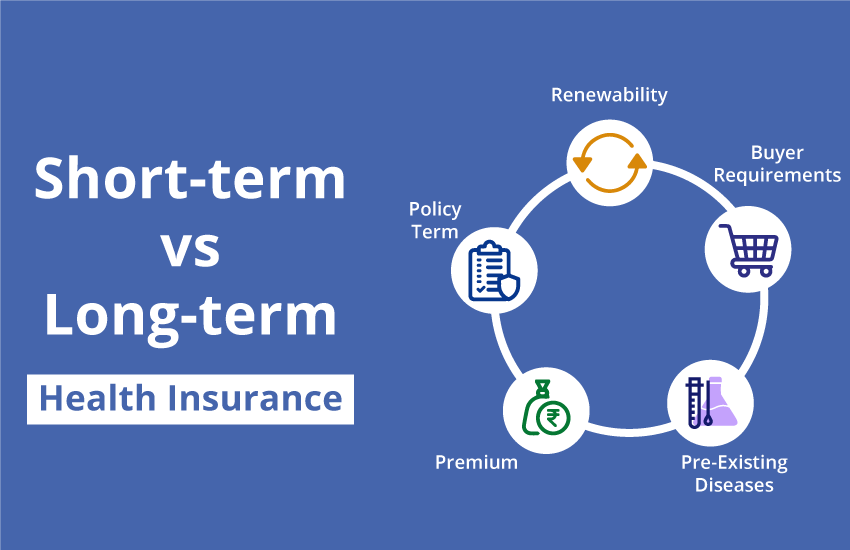The Facts About Medicare Advantage Agent Revealed
The Facts About Medicare Advantage Agent Revealed
Blog Article
Rumored Buzz on Medicare Advantage Agent
Table of ContentsThe Best Strategy To Use For Medicare Advantage AgentMedicare Advantage Agent Things To Know Before You Get ThisThe Single Strategy To Use For Medicare Advantage Agent

complies with from confusing the relatively young age account of the without insurance with the far better health and wellness, on standard, of younger individuals. This obscures the link between health condition and medical insurance. For those without accessibility to workplace wellness insurance, poor wellness is a possible obstacle to buying nongroup insurance coverage because such protection might be highly priced, omit preexisting problems, or be simply inaccessible. The variety of uninsured Americans is not particularly big and has actually not transformed in recent years. 7 out of ten respondents in a nationally depictive survey thought that fewer Americans did not have medical insurance than really do(Fronstin, 1998). Roughly half(47 percent )believed that the variety of individuals without wellness insurance policy reduced or stayed constant over the latter fifty percent of the last decade(Blendon et al., 1999). This decrease of nearly 2 million in the variety of individuals 'without insurance (a reduction
of around 4 percent)is definitely a positive modification. With a softer economy in 2000 the current reported gains in insurance policy protection may not continue(Fronstin, 2001 ). The decline in the number of uninsured will not proceed if the economic climate continues to be slow and health treatment costs continue to outpace rising cost of living. This is since the data were gathered for a period of strong economic efficiency. Of the approximated 42 million people that were uninsured, just about regarding 420,000(regarding 1 percent)were under 65 years old, the age at which most Americans become eligible for Medicare; 32 million were grownups in between ages 18 and 65, around 19 percent of all adults in this age team; and 10 million were children under 18 years of age, about 13.9 percent of all children (Mills, 2000). These quotes of the variety of individuals without insurance are produced from the annual March Supplement to the Present Population Survey (CPS), carried out by the Census Bureau. Unless otherwise noted, national price quotes of individuals without wellness insurance and percentages of the population with different kinds of insurance coverage are based upon the CPS, one of the most extensively used resource of price quotes of insurance policy coverage and uninsurance prices. These surveys and the quotes they yield are explained briefly in Table B. 1 in Appendix B - Medicare Advantage Agent. These studies vary in dimension and tasting methods, the questions that are inquired about insurance coverage
Examine This Report about Medicare Advantage Agent
protection, and the time duration over which insurance protection or uninsurance is determined(Lewis et al., 1998, Fronstin, 2000a ). Still, the CPS is specifically helpful because it produces yearly quotes reasonably rapidly, reporting the previous year's insurance policy coverage approximates each September, and since it is the basis for a consistent set of quotes for greater than two decades, enabling for analysis of trends in insurance coverage over time.

Getting My Medicare Advantage Agent To Work
Over a three-year period beginning early in 1993, 72 million individuals, 29 percent of the U.S. population, were without insurance coverage for at least one month. Within a single year(1994), 53 million people experienced at the very least a month without insurance coverage(Bennefield, 1998a). Six out of every ten uninsured grownups are themselves used. Although working does boost the chance that and one's member of the family will have insurance coverage, it is not a warranty. Even members of families with two permanent breadwinner have almost a one-in-ten opportunity of being without insurance (9.1 percent without insurance price)(Hoffman and Pohl, 2000 ). The connection in between medical insurance and access to care is well developed, as recorded later in this chapter. Although the partnership in between medical insurance and wellness outcomes is neither straight neither straightforward, an extensive professional and health services study literary works links medical insurance coverage
to improved accessibility to care, better top quality, and boosted personal and population health and wellness standing. The 2nd report, on personal health results for uninsured adults, is represented by the inner circle of the figure, while the 3rd record, on family members wellness, includes the topics of the second record yet stresses a different device of evaluation, specifically, the family. The sixth record in the series will certainly provide details about strategies and initiatives undertaken in your area, statewide, or nationally to resolve the absence of insurance policy and its unfavorable effects. Levels of analysis for analyzing the impacts of uninsurance. This discussion of medical insurance protection focuses mainly on the U.S. population under age 65 since practically all Americans 65 and older have Medicare or other public protection.
It focuses particularly on those without any kind of health insurance coverage for any size of time. The issues encountered by the underinsured remain in some respects comparable to those encountered by the without insurance, although they are typically less severe. Uninsurance and underinsurance, however, entail distinctly different plan problems, and the methods for resolving them may differ. Throughout this research study and the five records Go Here to follow, the primary focus is on individuals without any medical insurance and thus no assistance in spending for health care past click here now what is available via charity and safeguard organizations. Health insurance coverage is an effective element influencing invoice of care because both patients and physicians react to the out-of-pocket rate of solutions. Medical insurance, nevertheless, is neither required neither sufficient to get access to medical services. Nonetheless, the independent and direct result of health and wellness
insurance protection on access to health and wellness services is well established. Others will obtain the healthcare they require also without medical insurance, by spending for it out of pocket or seeking it from service providers who provide treatment free or at highly subsidized rates. For still others, wellness insurance coverage alone does not guarantee receipt of treatment since of various other nonfinancial barriers, such as a lack of healthcare suppliers in their community, limited accessibility to transport, illiteracy, or etymological and cultural differences. Formal research concerning without insurance populations in the United States dates to the late 1920s and early 1930s when the Board on the Price of Medical Care produced a collection of records regarding funding medical professional workplace brows through and hospitalizations. This concern came to be salient as the varieties of medically indigent climbed during the Great Depression. Empirical research studies continually support the web link in between access to care and enhanced health browse around this site results(Bindman et al., 1995; Starfield, 1995 ). Having a routine source of treatment can be considered a predictor of accessibility, instead than a straight action of it, when wellness results are themselves utilized as access signs. This expansion of the notion of accessibility measurement was made by the IOM Board on Keeping Track Of Gain Access To to Personal Health Treatment Services(Millman, 1993, p. Whether or not parents are insured shows up to affect whether or not their children get treatment as well as just how much careeven if the youngsters themselves have insurance coverage(Hanson, 1998). The health and wellness of moms and dads can affect their capability to care for their kids and the level of family tension. Bothering with their kids's access to care is itself a resource of stress and anxiety for parents. Three chapters follow in this record. Chapter 2 supplies an overview of just how employment-based health insurance coverage, public programs and individual insurance policy plans operate and interact to provide comprehensive however insufficient insurance coverage of the united state population. This includes a review of historic patterns and public laws influencing both public and exclusive insurance, a discussion of the communications among the various sorts of insurance policy, and an evaluation of why individuals move from one program to one more or finish up

Report this page